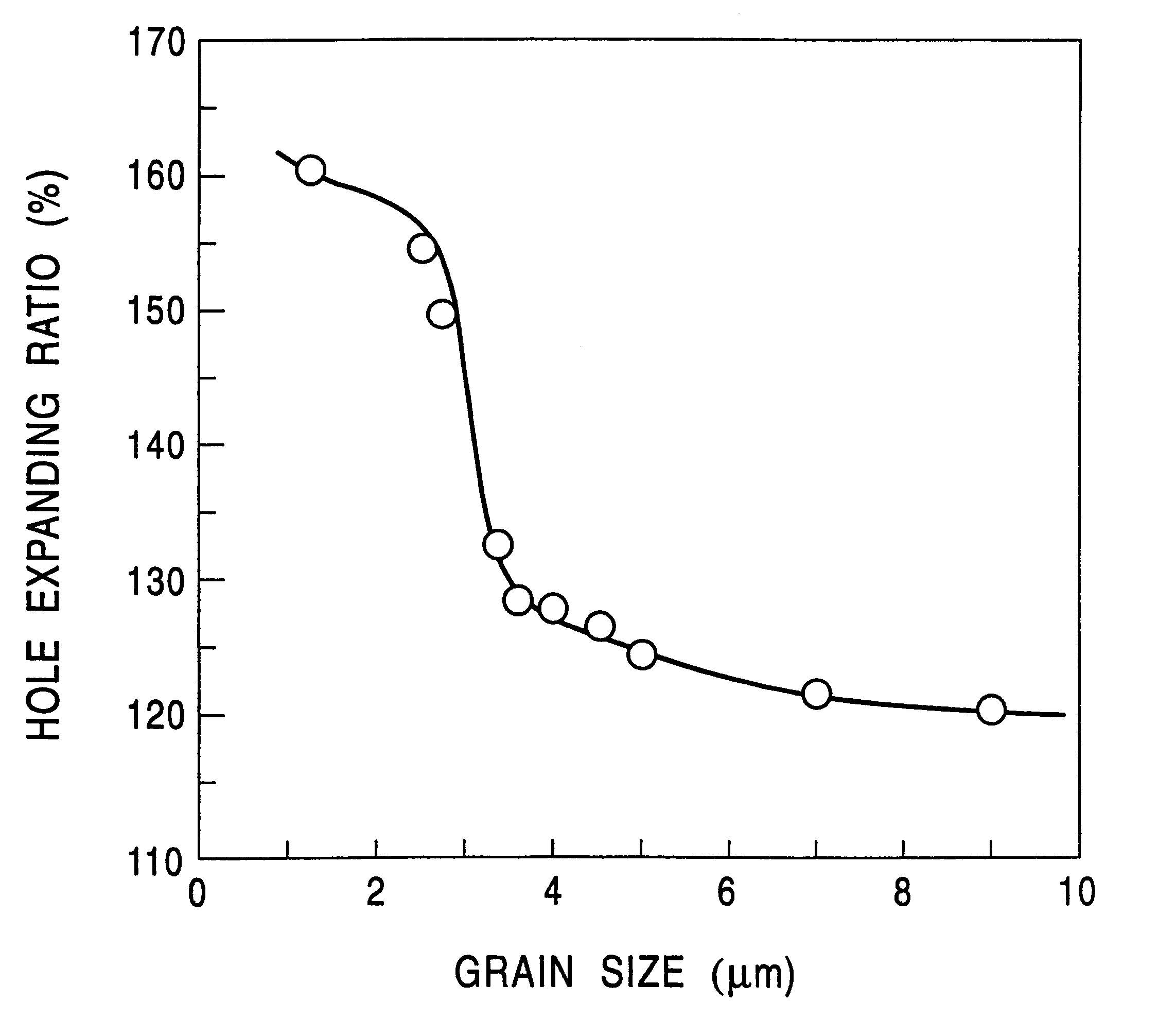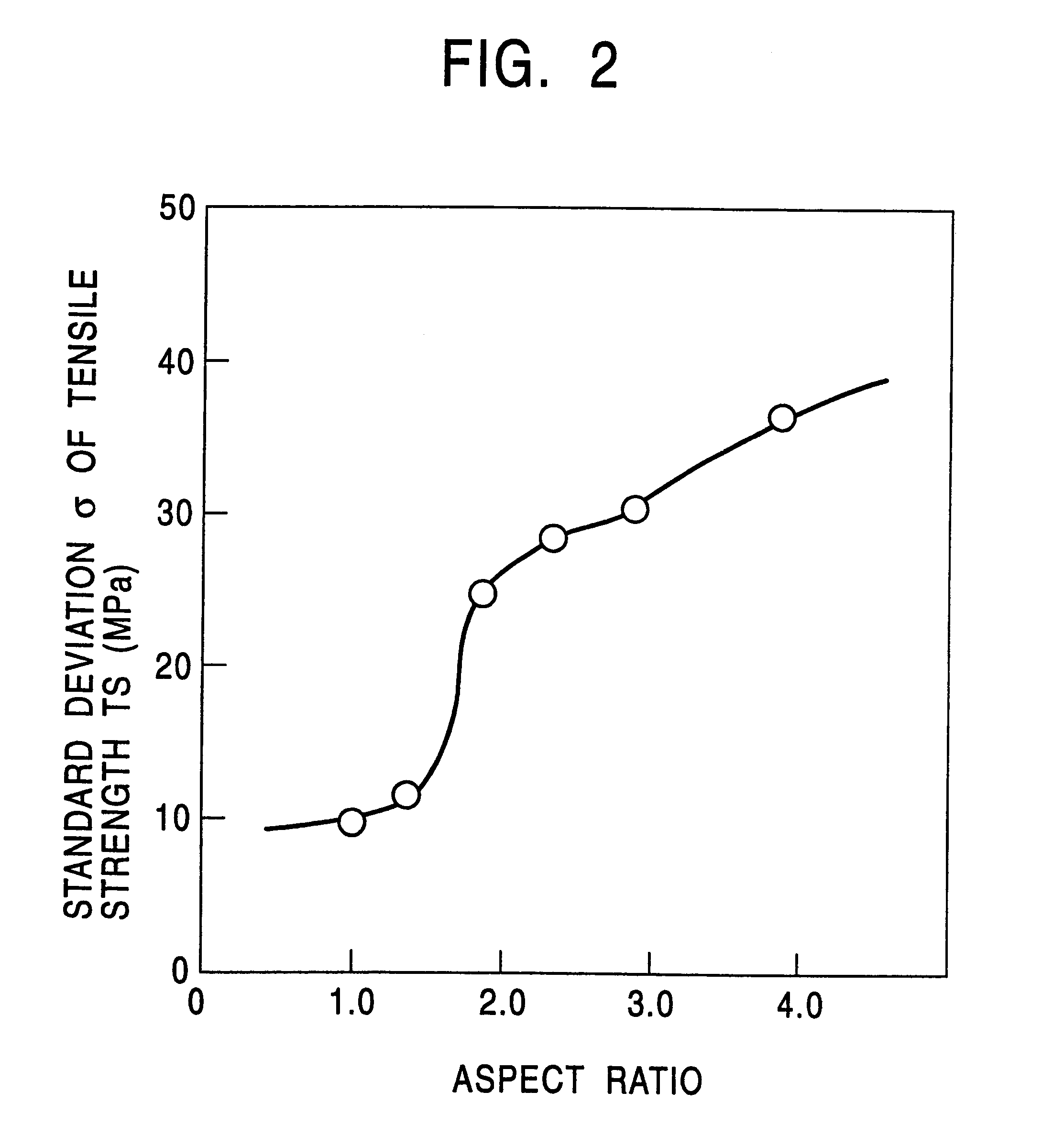High-strength hot-rolled steel sheet having excellent stretch flangeability, and method of producing the same
a high-strength, hot-rolled steel technology, applied in the direction of manufacturing tools, heat treatment equipment, furnaces, etc., can solve the problems of inability to suppress the disorder in the shape of the steel sheet, disadvantageous hot-rolled steel sheet in ensuring satisfactory mechanical properties, and difficult to employ hot-rolled steel sheets as thin high-strength steel sheets. , to achieve the effect of excellent stretch flangeability and high uniformity in both shape and mechanical properties
- Summary
- Abstract
- Description
- Claims
- Application Information
AI Technical Summary
Benefits of technology
Problems solved by technology
Method used
Image
Examples
example 1
A steel slab having a composition containing components listed in Table 1 and the balance consisting essentially of Fe was smelted. This steel slab was subjected to hot rolling under conditions shown in Table 2 to have a sheet thickness of 1.6 mm or 3.2 mm after final finishing. Resulting steel sheets were used as test specimens after pickling them. The coefficient of heat transfer during cooling was adjusted by regulating the water flow rate during the cooling and the intervals between cooling nozzles. Each of the hot-rolled steel sheets thus produced was subjected to observation of the microstructure by an optical microscope, a tensile test, a bending test, and a Hole Expanding test.
The tensile characteristic was measured using the JIS No. 5 specimen. The Hole Expanding test was made in conformity with the standards of the Japan Iron and Steel Federation by punching a hole of 10 mm.phi. through the test specimen (constant clearance of 12.5% ) and enlarging the hole by a conical pu...
example 2
A steel slab having a composition of C: 0.15 wt %, Si: 0.55 wt %, Mn: 1.8 wt %, P: 0.009 wt %, S: 0.001 wt %, Al: 0.039 wt %, N: 0.0025 wt %, Nb: 0.025 wt %, and Ca: 0.0020 wt % was used as a blank. From this blank, hot-rolled steel sheets (subjected to pickling) having thickness of 3.0-1.2 mm were produced under conditions shown in Table 4. In the case of applying continuous rolling, sheet bars with a thickness of 25 mm obtained by rough rolling were continuously subjected to finish rolling in accordance with the method of heating the tailing end of a preceding sheet and the leading end of a succeeding sheet on the entry side of a finish rolling mill so that the successive sheets were joined together by hot pressing. As with Example 1, the coefficient of heat transfer during cooling was adjusted by regulating the water flow rate during the cooling and the intervals between cooling nozzles. Each of the hot-rolled steel sheets thus produced as test specimen was subjected to the same ...
PUM
| Property | Measurement | Unit |
|---|---|---|
| Temperature | aaaaa | aaaaa |
| Temperature | aaaaa | aaaaa |
| Temperature | aaaaa | aaaaa |
Abstract
Description
Claims
Application Information
 Login to View More
Login to View More - R&D
- Intellectual Property
- Life Sciences
- Materials
- Tech Scout
- Unparalleled Data Quality
- Higher Quality Content
- 60% Fewer Hallucinations
Browse by: Latest US Patents, China's latest patents, Technical Efficacy Thesaurus, Application Domain, Technology Topic, Popular Technical Reports.
© 2025 PatSnap. All rights reserved.Legal|Privacy policy|Modern Slavery Act Transparency Statement|Sitemap|About US| Contact US: help@patsnap.com



